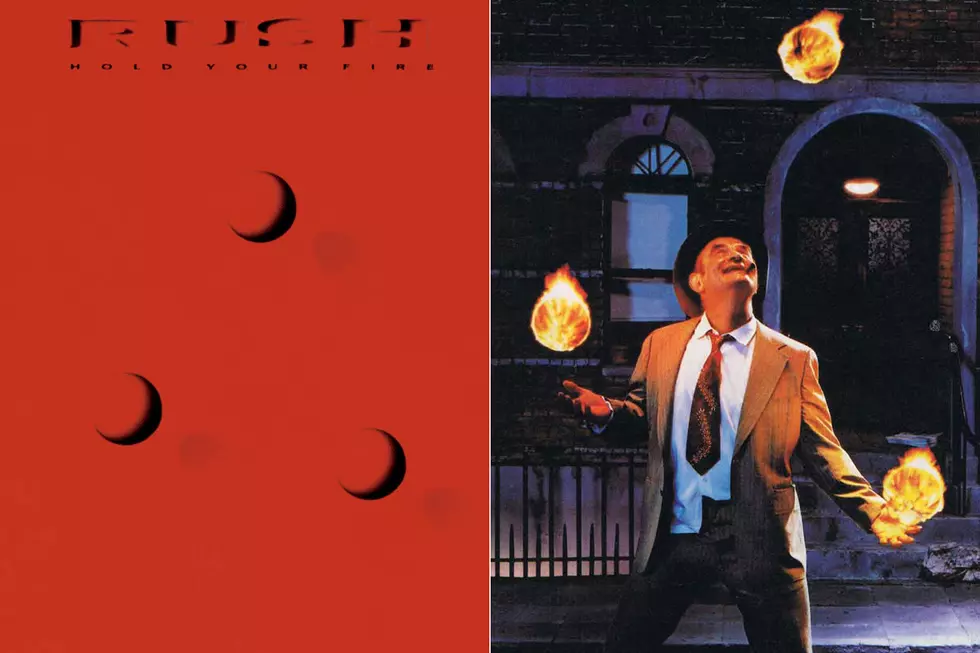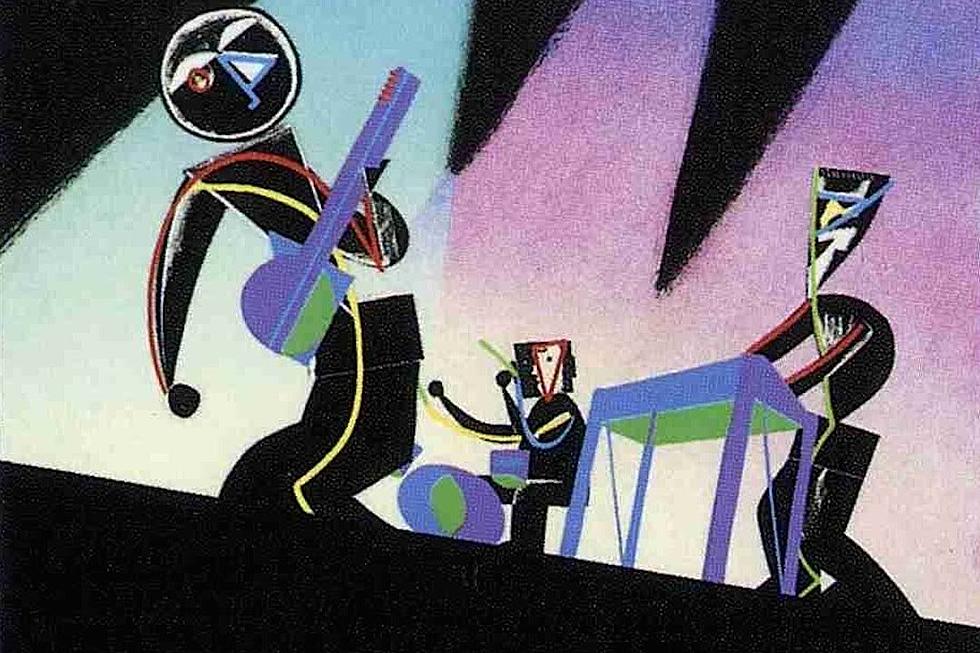
Rush’s Understated ‘Hold Your Fire’ Cover Hides a Big Surprise
Hold Your Fire is one of Rush's most understated covers: three spheres in a triangular pattern, set against a red backdrop. Ironically, art director Hugh Syme saved his more intricate, eye-catching design for the inner package.
"To have the cover that sparse, with [a more intricate interior] — I liken it to the liquid center on a candy," he tells UCR. "When you finally bite through it, you encounter the unexpected."
The gatefold artwork is among the most famous from his vast portfolio with the prog-rock trio. On a rainy street, amid fire hydrants, stray cats and sewer grates, a disheveled, cigar-chomping businessman juggles three flaming orbs, which form roughly the same pattern as those on the cover.
And in the pre-Photoshop era, creating that detailed scene was an artistic challenge — full of tactile maneuvering and imaginative workarounds. He constructed the backdrop as a five-foot-wide miniature set, photographing it in the studio using "mini-mole lights," similar to theater lighting.
"That was a fun shoot," Syme recalls. "Building and painting that set was about a two-week process. We wanted the streets wet, and we quickly found out that, because we had made the asphalt out of heavy grit sandpaper — glued and taped to a Foamcore substrate, all of which was very porous and absorbent — the moment you started spraying it with water, it started curling up. We had to clamp the streets down. We reverted to mineral spirits, which stayed wet-looking for about 15 seconds under the hot light, so you had to keep spraying down the set to keep it looking recently rained-on."
To create the "airborne flaming orbs," Syme lathered some volleyballs with rubber cement and photographed them outside at night.
"I later composited those together," he says. "It was a process called emulsion stripping, where you take high-powered [binocular-type glasses] to better see where to cut the emulsion layer, and they actually float the color emulsion layer off the top of the clear acetate substrate. It's not as fragile as you might expect. It's not like it falls apart. But it's very flimsy because it's wet. They put one layer on top of the other, and you have to cut through the fire ball and through the background (at the same time). You pull a piece of background out and lay the fire ball into the background — it's all very analog."
Syme originally cast Dennis Hopper — who'd recently co-starred as the deranged villain Frank Booth in David Lynch's 1986 thriller, Blue Velvet — as the juggler character. But after the actor's "schedule caved in and ambushed our aspirations," they recruited Stanley Brock.
"Glenn Wexler, who photographed the elements for this image, had access to Stanley through a casting agent he was familiar with," Syme says. "He came in and was a real character. He suited the role perfectly. I always regretted the fact that it wasn't Dennis, but that's OK."
Despite the "arduous hard work" of assembling that scene, he still wanted to take a more subtle approach to the cover — and in a theme that ran throughout his decades-long Rush tenure, the higher-ups apparently weren't happy with that vision.
"To the dismay of management," Syme says, "I opted to do something really minimal and graphic on the cover" — choosing a "shape that would permeate through the marketing and the merchandising: the three spheres."
In this case, surprise was essential to the visual experience. "That gatefold," he adds, "was intentionally meant to reveal a more elaborate image."
You can see the full Hold Your Fire gatefold image at Cygnus-X1.net.
Rush Albums Ranked
More From Ultimate Classic Rock









